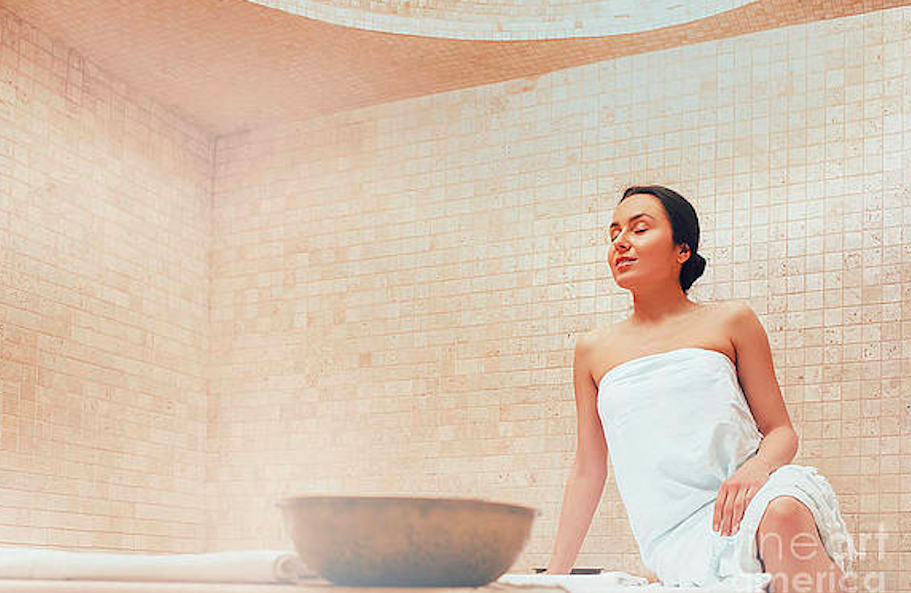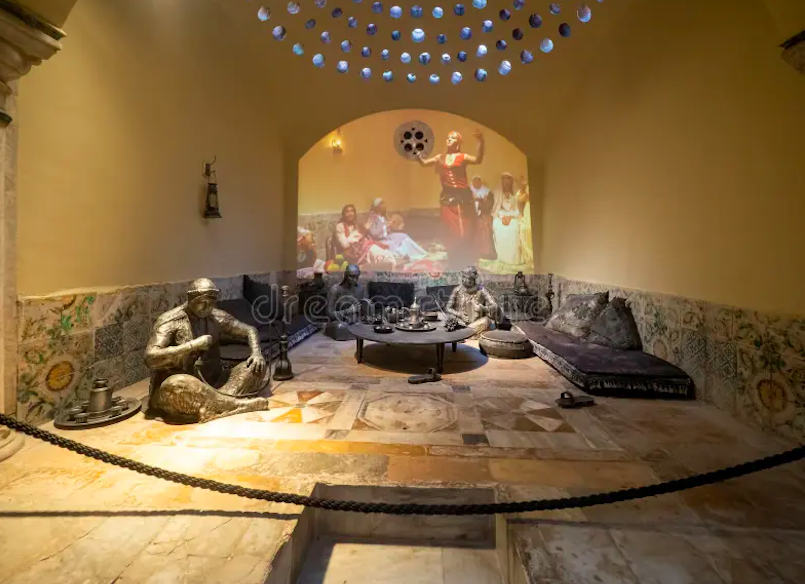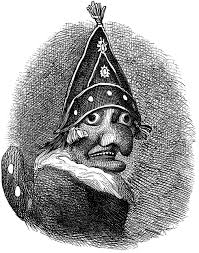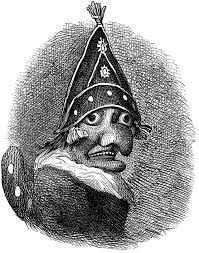
Feminine Mystique
Christianity and Islam first co-mingled in Constantinople. Contributor MICHELLE SHAIL explores Turkey's romanticism, myths and sexism on Western culture.

AP
During the long winter month’s temperatures hover near freezing. Dreary clouds can hide the sun for days, and I can often be found thawing in the self-imposed exile of my Jacuzzi tub. It’s a retreat to a sacred place of relaxation where I can escape, dream and create with perfect clarity.
The medicinal love affair with water and bubbles is not unique to the American culture. Indeed, civilizations have been exploiting the institution of bathing and blending it with their social fabric since the 2nd millennium BC. As such bathing was a public rather than private event. The baths of the ancient Greeks adjoined their palaestras (training grounds) to accompany the physical fitness and athletic gaming that defined much of their culture. The significance of public bathing ran even deeper for the Romans. To highlight its importance, the Romans erected imposing structures adorned with lavish details to create an almost cathedral feel. For the Romans, bathing was not just for cleansing purposes, skin care and relaxation; it was for recreation as well. These indoor arcades were social centers for conversation, business and education. An analogy can be drawn to the present day American golf course where business deals are sealed and more importantly the values, attitudes and customs of the time are underwritten in a venue of play.
The architectural remains of the Greek baths influenced the Islamic culture and around 600 AD Muhammad embraced sweat baths, believing it enhanced fertility. After all, leaders need followers young and old and so with Muhammad’s encouragement the Islamic hamam (Arabic for “spreader of warmth”) began to proliferate. Prior to Muhammad’s rhetoric, the Arabs used only cold splashes of water for bathing. With the acceptance of and delights resulting from the inclusion of warm water the Arabs customized the hamam to meet their needs and as such religious significance quickly grew. Hamams became annexes to mosques in order to comply with Islamic laws of hygiene and purification. Similar to modern day US spas (which number in excess of 14,000 and account for nine billion dollars in revenue), visitors to the Hamams traverse though a series of rooms often heated by natural hot water to induce sweating and encourage relaxation, following with a massage and ending in the rest hall for beverages and fans of cool air from servants.Something Forbidden
Utilitarian function soon grew into social form but women were initially forbidden from the Hamam. The resting place for women was the harem. This notion of segregating the sexes originated in the Near East and traveled west during the Ottoman Empire, an imperial monarchy that dated from 1299 – 1922. While Western art often depicts an exotic notion of the harem as a playground for sexual follies, it was originally just the part of the house where female relatives and children lived. In Arabic the word “harem” means “something forbidden or kept safe.” In the Islamic culture women were secluded and outsiders forbidden in an attempt to protect them. Harems were a social custom that protected the royal lineage and an isolated environment in which to prepare women to appear in public as a royal wife. Only in the harem could women remove their head garments and be temporarily unbridled from the strict customs of how women should appear in public. Ultimately because of the hygienic benefits, “The Word” was reinterpreted and women were allowed use of the hamams. Soon they were as numerous as neighborhood country clubs in Charlotte. In time the privilege of the hamam became a right and a measuring stick of wealth and social acceptability. Bernhard Stein, writing for the Neuse Freie Press wrote in 1897 of the importance of the hamam for Turkish women:
The Turkish women sit, unveiled, in patterned robes, smoking, gossiping, laughing, suckling their children or painting their faces. On the whole there is no better place for getting to know the happy inactivity of the Turkish woman’s life. Women’s supposed dalliances in harems and hamams may have been touted and accepted as protection then, but translate to control and a derogation of the soul’s need to discover meaning and pursue happiness today. Throughout history, women were discouraged and in some ways prohibited from pursuing meaningful dreams and identities outside of raising children and caring for homes. Draconian conservatives employed byzantine tactics such as invoking God’s name in the argument and implied that women building and pursuing passions were jeopardizing the well being of their children and stability of their family. Today we know this to be untrue. As women have pushed aside cultural expectations to explore their passions and have gained financial independence they find the freedom to be more selective in choosing a partner and the ability to negotiate power within a relationship and guess what, they stay married longer! Just as their American counterparts, women of the East ache for the freedom to throw off the confines of their veils, exercise freewill, explore and contribute their talents for the betterment of their society for all that it means and represents to them.
It seems men and women have been separated since the beginning of time, rendering it impossible for them to develop any sort of productive dialogue. Humans are social creatures; in segregation and isolation men and women cultivate bonds of intimacy not with one another but rather with their constituency. The disconnected communication between male and female is perpetuated as each group forms their own vocabulary and leverage within the social group to the exclusion of the other.
Vague geographic boundaries, fragile governments, constant threats of attack and conquest may have been the impetus for segregating men and women historically. But today, social rhetoric and cultural norms divide men and women sequestering them to separate corners of daily life exacerbating the already tenuous discourse between man and woman. After centuries of separating the sexes and attempting to validate it, intimate conversation and communication between men and women is not generally to elevate the other, inspire and promote passions or encourage evolution to a deeper purpose in life. Instead it is a lyrical dance of disapproving interrogatory to leverage control and power.
For all the justified or unjustified attempts of controlling or preventing another person from pursuing their journey to happiness we skip over Sir Isaac Newton’s discovery of the universal Cosmic law of cause and effect. The Cosmic law which exists in physical science as well as our every thought and action states that for every action there is an equal and opposite reaction. Our thoughts and actions invoke the Law of Compensation – KARMA; as such the universe establishes an accountability and balance between the credits and debits in our thoughts, actions and intentions. Its stands to reason that one person’s (or groups or institutions) attempt to rob another person(s) of their pursuit of happiness are tantamount to stealing from their own journey. And retribution on behalf of the other side only perpetuates a negative cycle. Both sexes continue to suffer as we seek to control the external world at the expense of our internal selves.
Once a social movement begins its impossible to stop it. Take the United States as an example. For centuries the laws and social customs, under the shroud of protecting the family and providing social order and underwritten by religious institutions of the time relegated women to the sidelines and assigned her worth as second class. Redemption has been found in many ways as women have rightfully expanded their leadership presence in organizations and the benefits are evident in what’s being called pink profits. The pendulum has swung assertively to the other side as women now dominate 85% of the purchasing dollar, control household decisions on everything from houses, cars, vacations, and social networks to family calendars. Have men handed over their wallets in an attempt to quell the emotional demons of injustice and what price will men and women pay? Hierarchy of Needs
Prior to the 1950’s psychology mostly focused on the mentally ill and the pathology of the human mind and experience. Abraham Maslow (1908 – 1970) extensively researched and wrote about the human being’s quest for feeling whole, self sufficient, aware of a personal truth, and a general positive state of mind. As such he was a leader in the field of Humanistic Psychology that suggests that humans are desirous and capable of discovering whole, happy, resilient lives filled with meaning and purpose. Maslow’s Hierarchy of Needs is a pyramid of human needs. The bottom two levels of the pyramid address physical survival, first “basic needs” such as food, water and human touch following “security and stability.” Once the basic needs for brute survival are satisfied, psychological needs for “love and belonging” are explored, followed by the “esteem” level, which addresses the need for success and status. Finally at the top of the pyramid is “self-actualization” where individuals reach a state of harmony and understanding.
Through the lens of Maslow’s Hierarchy of Needs, a broad correlation can be seen in the cultural growth, prosperity and crisis of today. Surviving in the 18th century was tough; during the agricultural age we improved our systems for basic human needs of food, water, shelter and community relations. This gave way to the Industrial age where we learned to mass-produce necessities and automate systems and processes creating a greater sense of security and stability for our families and country. With the age of information, workers moved from the factory floor to offices, the world got smaller with technology and a global economy, and the quest for success and status catapulted us right to the Great Recession.

AP
So where are we today and what does it have to do with communication between males and females? Today, we are at the top of the pyramid searching for meaning, purpose or in Maslow’s terms, a self-actualized state of harmony and understanding. Self-discovery can bridge the communication gap between the sexes. Control, expectation and obligation are converted into observations and strategies that utilize the passion and talent of both sexes. We need not succeed in spite of one another but rather with the applause, adoration and respect of each other. Rather than allow social customs and external expectations to make our choices, we must trust in the profound value of the pursuit of personal truth and happiness. As we are in tune with our needs, establish our principle foundations and boundaries that secure our ideology, the universe will conspire to assist us.
Today we live in a hyper-connected society that is in a state of constant motion. We are soaked in information and options from all directions – our insular relationships, cultural influences, external forces such as friends, employees, coworkers, bosses and our past experiences that leave indelible marks on our personalities, how we see the world and the choices we make. Controlled and stable structures of institutions, organizations and governments are scrambling to find the balance between leveraging technology such as social media, smartphones and the internet while maintaining the illusion of being in charge. The reality is that traditional institutions of knowledge and morality, which are simply reflections of a time in history, cannot support our evolving psyches and search of meaning because of the deluge of information and connectivity to others. The world with its cultural options offers opportunities to experience and interact with humanity in a wildly different way than the generation before us. Traversing this stage in humanity and embracing a state of harmony and understanding requires an inward search of our souls and passions and aligning our lives with such. Francis Bacon said, “It is a sad fate for a man to die too well known to everybody else and still unknown to himself.” The Conceptual Age
Author and speaker Daniel Pink calls the 21st century “The Conceptual Age.” In his book, A Whole New Mind, Pink explores the affects of brain power from the East, sophisticated automation from technology and equipment, and access to just about anything we want or need any time of the day or night. These factors shift the emphasizes of influence towards right brain attributes of big picture thinking including artistry, empathy, and our search for meaning. It also happens to sync with Maslow’s self-actualization stage. In the last ten years, researchers have been able to record the shifts in our emotionality by the ways in which we spend our time. Meditation, yoga and transcendental television (i.e. reality TV) for instance has grown exponentially, suggesting that people are in search of meaning and purpose in their lives. The current economic crisis has forced many of us to reexamine our priorities as funds for retail therapy have all but dried up. The New York Times published a story in January that found Americans are searching for elevated experiences during the hard times. Respondents of a poll described a quest for meaning amidst the uncertainty. Instead of shopping for nonessentials we are spending more time with family, friends, gardening, cooking and reading. Cultural venues such as museums have reported an increase in attendance and excursions to the movies was up five percent in 2009.
Regardless of gender, we all share the quest for meaning. Meaning can be found in large and small ways. I volunteered this year to chair the yearbook committee at my children’s school. Why, I was asked, did I sign up for that task in addition to juggling the demands of three children and a household, writing articles and pursuing a master’s degree. The answer is as multidimensional as we are as individuals. Practically speaking it is an opportunity to oversee a project, to utilize participative concepts of organizational development and to practice those touted communication skills. To the issue of intrinsic motivation and Pink’s ideas regarding the conceptual age, planning and laying out the yearbook is an opportunity to design and create something new. There is something daunting and empowering in coming face to face with blank pages to be filled with purpose and imagination. More than all those reasons though, is the meaning attached to the project. My children love their yearbook. Last year’s 64 page memorabilia is worn from reminiscent fingers. Over the summer months it becomes a medium to recall fond memories, to visit emotionally with friends separated by neighborhood lines, camps and family vacation. The yearbook has meaning to them and my participation not only exercises my skills but creates a bond with my children.
The abundance of information and demands of 24 hour connectivity and availability of products and services can make it challenging to unearth meaning and purpose let alone focus and explore our inner strengths. Pink discusses a perspective strategy in his book that I often use when I feel the pull of external circumstances. It’s simply to think backwards. We think backwards in almost every utilitarian aspect of our lives. From the time we start careers in our 20’s we plan for retirement and parents plot strategies for where they want their children to attend college before the children are even born. The same savvy can be applied towards our psychological maturity.
We all share death and how we feel and interact with our world are a matter of choice. As part of the adult development cycle the twilight years bring forth opportunities for reflection. But time is finite; as such the opportunity to spring forth in the world and massage our fates has passed if consideration is taken at the end rather than the beginning of life. Imagine yourself at 90, when you reflect what do you see, how do you feel and what imprint do you want to leave in this world? By envisioning our highest dream and arranging time and energy so as to move towards that end we unquestionably accomplish something meaningful to ourselves and society. Sure, the end result may look different but what matters is the journey, the value is in the pursuit of the high dreams. Energy, unlike time, is infinite and our contributions and fulfillment will naturally emerge as the warm springs bubbling below the hamams as we shift energy and time towards a higher purpose and meaning and away from external forms of control and isolation.
Over the Christmas holiday my husband and I had dinner with family members. In the course of the evening there was a miscommunication regarding the check. He was surprised by what he thought I said and I was floored that he could interpret my statements as such. Of course the bill was only a symptom of the larger issue of communication. In the end, he shared his side, I mine, and we agreed somewhere in the middle. Such dialogue and negative energy could stew and manifest to further segregation, but it did not. Our conversation quite naturally flowed towards the pursuit of a higher purpose of enlightenment, joy and an integration of his ideas and mine. After all, I had a bath to take and an article to write.






